Stretching for New Runners
Why stretch?
Stretching before and after exercise is very important for all runners. The benefits from stretching are that you may prevent injury, bring the shortened muscles back to their original length, and to reduce or avoid post exercise stiffness. When you stretch you are trying to increase the range of movement around a joint or a group of joints. This helps to strengthen the joint and to increase the flow of blood into the muscles around the joint.
Before exercise, in the warm-up, you want to prepare the muscle for activity. The best time to stretch is just after a short easy jog and to hold each stretch for 10 seconds. It is especially important if you intend to start an intense activity such as sprinting or speed-work.
After exercise, in the cool-down, you want to bring back the muscles used to their original length. During activity the muscle shortens, you notice this when the muscle gets tight and hard. To reduce or even prevent post exercise muscle stiffness you are now trying to lengthen and loosen the muscle back to its pre-exercise level. You should hold the stretch for longer – 30 seconds.
Below are stretches we recommend you as a minimum do before and after running. There are many more good stretches but these five exercises will be a good start to prevent you from getting injured.
Ten tips on how to stretch
- Move slowly into the stretch.
- Hold the stretch for 10 seconds prior to exercise (warm-up) and for 30 seconds post exercise (cool-down).
- Breathe and relax while holding the stretch.
- NEVER do any bouncy stretching, always hold and relax.
- Focus on the muscle you are trying to stretch and then try to lengthen it.
- You may be able to breach in and push the stretch slightly further half way through the stretch. This is most important during cool-down.
- Move slowly out of the stretch again.
- Remember to stretch both sides.
- Increasing the range of movement around a joint will help the blood flow to the muscles surrounding the joint and increase circulation that will carry away any lactic acids that may build up in the muscle.
- Do more stretching that just warm-up and cool-down. A lot of gyms offer stretch-classes where the aim is to permanently and progressively to increase your flexibility.
5 essential stretches
Calf – Gastrocnemius
|
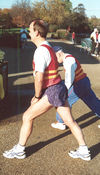 |
Calf stretch Lower calf – Soleus
|
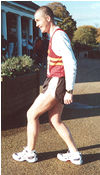 |
Hamstrings
|
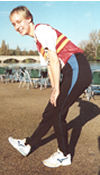 |
Hamstring stretch Quadriceps and Hip-flexors
|
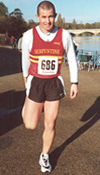 |
Quads stretch Iliotibial Band
|
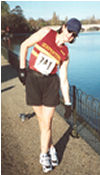 |
